Saul Steinberg, “Country Noises,” from Steinberg at the New Yorker
Inge Morath. Saul Steinberg Masks & Girl in Bath. 1960s.

A digital scrapbook by the author of Steal Like An Artist and other bestsellers.
Saul Steinberg subway drawing
Street level, 3 levels of the subway, 5 stories of the skyline all in one amazing drawing
Speaking of Steinberg and the subway, here’s another favorite:
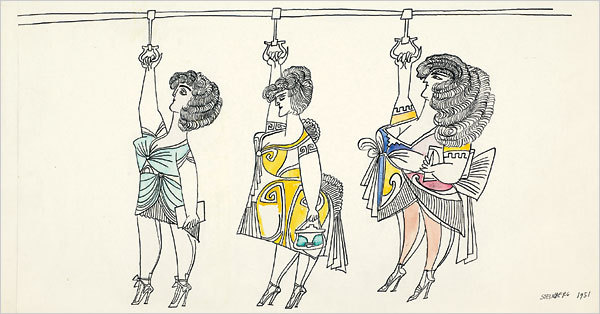
Filed under: Saul Steinberg
Paul Klee Drawings
“The relationship between Klee and myself is that we are both children who never stopped drawing.” —Saul Steinberg
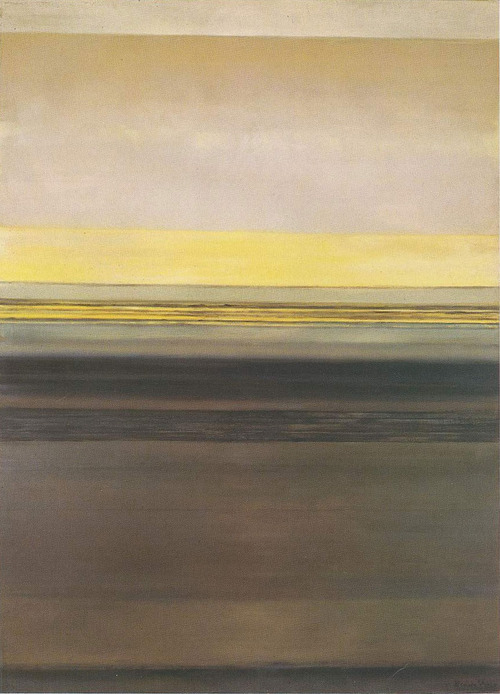
Hedda Sterne (1910-2011) was a Romanian-born painter and artist who just so happened to be married to one of my favorite artists, Saul Steinberg. Here they are posing in front of a fireplace:

Here’s a LIFE magazine profile of Sterne and Steinberg, where they’re billed as a sort of powerhouse art couple (they later separated, but never divorced):

Here’s a drawing of Steinberg she did in the 40s:
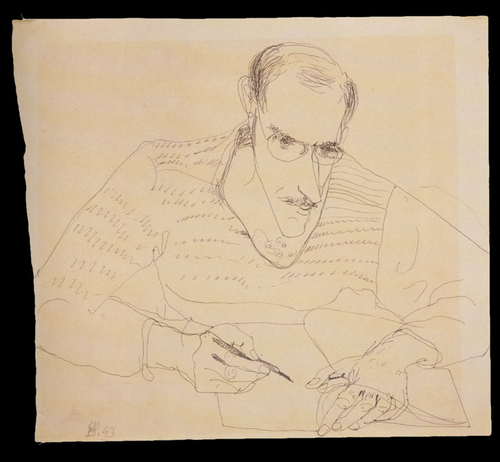
Here’s another photo of her posing for LIFE magazine with with a bunch of Abstract Expressionists, aka “The Irascibles,” many of whom didn’t want her in the photograph because she was a woman:

She outlived every single one of the bastards.
And, as Sarah Boxer points out, the photo is ironic, because “Sterne thought of herself as an anti-Abstract Expressionist, someone with no use for the cult of personality and personal gesture.”
In an interview with Art In America when she was 96-years-old, she explained that her art was not about ego, but about sharing what she had seen:
All along it was never imagination of self-expression. I always thought that art is not quote self-expression by communication. It is saying, hey, look! Of course, what you react to has to be transformed, without a doubt, or otherwise it is not art, but you do that whether you want it or not. The intention, the purpose, is not to show your talent but to show something. This is very important. Because I grew up and lived in a period of ego, ego, ego. And I was always anti-ego… I was always trying to reduce the ego… I had a very great urgency to show, to share… I discovered things and wanted to share them.
And that her work was, in a sense, an act of pointing:
In our time, artists are inclined to believe that art is like honey, the product of their own subconsciouses, their own minds, and I do not. I see myself as a well-working lens, a perceiver of something that exists independently of me: don’t look at me, look at what I’ve found.

As a girl in Romania, she said, “All I wanted to do was stay home and draw and read. I taught myself to read and write when I was five. By the time I was six I read for pleasure. I had already read Dostoyevsky at eleven.”
From an interview with BOMB:
You see, one really doesn’t change that much. In many ways, I have a feeling that I am exactly as I was as a child, when I spent my life reading and painting. And then, erroneously, for a while, I was involved in trying to live like a grown-up, and then I got old, and now I’m back doing what comes naturally. I just read and paint.
She met Antoine de Saint-Exupéry not long after she arrived in New York. He would call her and read chapters of stuff he was working on at 2 or 3 in the morning. When he was working on The Little Prince, he asked her for the name of a good illustrator, and she convinced him to draw his own illustrations.
When they were married, she and Steinberg would go cruise around:
We looked at everything, everything. Every Sunday when there was no traffic, we went motoring through New York. I was crazy about New York. Then in ‘47, I went to the country and I discovered agricultural machines. I had a feeling that machines are unconscious self-portraits of people’s psyches: the grasping, the wanting, the aggression that’s in a machine. That’s why I was interested to paint them.

She called herself a “kept woman,” and noted that because she was always married and had money, she didn’t really worry about fame or getting noticed, “I didn’t have to make concessions to be liked. If they liked me, it was OK. I never looked for a gallery.” She explained that staying away from fame was a way to protect her work:
I’ll have some terrific shows posthumously. I want to tell you something also, a little secret. Last summer, I read a book by David Bohm, the physicist, called Order, Science, and Creativity. They gave chimps paint and found that they’d rather paint than do anything else, they even forgot to eat. The only thing that stemmed the flow of the hated word, “creativity,” was when they began to reward them for painting. I have seen in my life again and again what fame does to people and I think that, subconsciously, I blundered to protect myself.
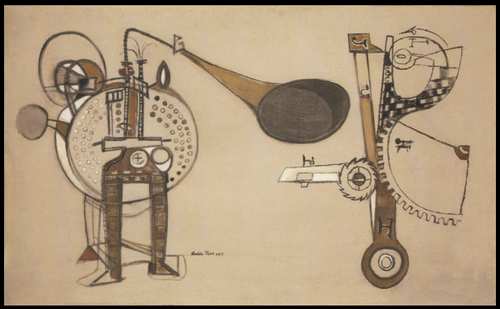
For her art was all about looking:
Whenever you reach a condition of true concentration, you do achieve an anonymous state. And, as a matter of fact, this is true for the onlooker, or the reader of a poem. Unless you can forget yourself when you look, there isn’t a true relationship happening between the work of art and the viewer. The same thing goes for work. The more anonymous you are and the more you lose yourself, the more you add to yourself. It sounds absurd, but that’s the way it really is.
And like Corita Kent, she thought you could find inspiration everywhere:
I heard once about a Yiddish poet who lived in utter poverty and misery, a teenager, who never had seen anything beautiful in his life, and he made splendid poems about vegetables jumping into the soup pot. My idea being that for the sublime and the beautiful and the interesting, you don’t have to look far away. You have to know how to see.
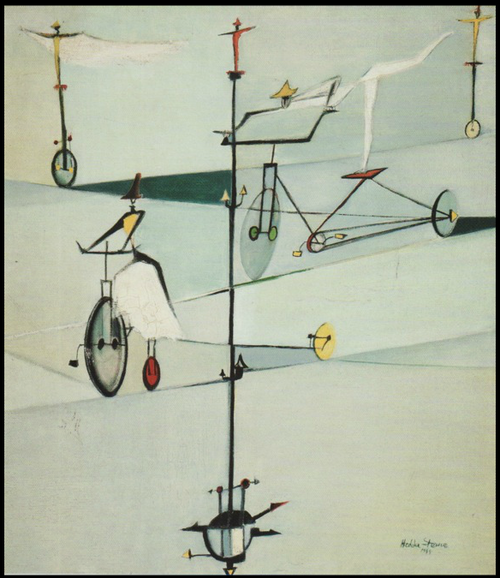
Sadly, by the end of her life, she’d had a stroke and couldn’t see and spent her days in a wheelchair. (“I do my best work now… Only in my imagination!“) She said she had to learn to be idle:
Now that I am so old and incapacitated, I don’t do anything with great enthusiasm. You know, thinking, dreaming, musing, become essential occupations. I am watching my life. As if I’m not quite in it, I watch it from the outside. Because after so many years of working unceasingly, and enthusiastically, being idle is a tremendous effort of concentration and adjustment.
The luck is that there is less energy. That’s a compensation. It makes it easier. Just sitting. I saw peasants in Romania, you know, on Sunday, when they get up all summer at 4 and work incessantly until noon, let’s say. And Sunday they just sit, and their resting is so active like an activity, resting. It’s a beauty to behold, you know. It’s not just doing nothing. It’s being and existing in a certain way. In a way old age is a little bit like that. It has its beauties.
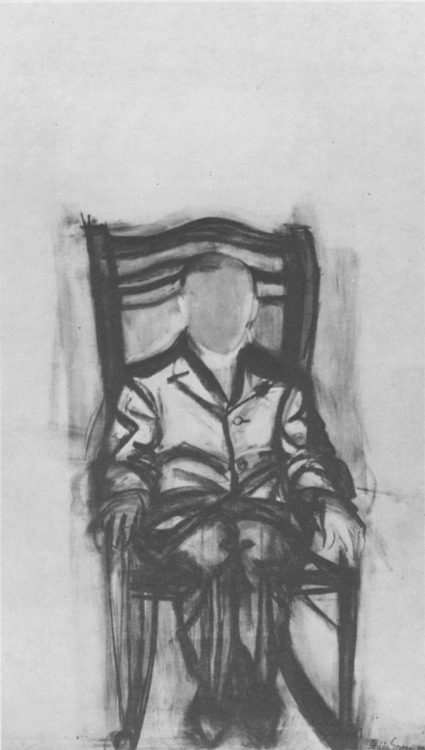
Here she is on the importance of her meditation practice to her work:
I’ve been meditating since 1966… I didn’t have a guru ever, but I read all the books. I gradually worked out my own system. It’s very, very much a part of my life… It has to do with cleaning the lenses, you know. Developing and taking care of your mind. A mind has to be both reflective and transparent. I do not separate any form of apprehending, perceiving and understanding. Let’s say the intellect is like going through the jungle with a machete, and the meditative mind is soaring above the jungle.
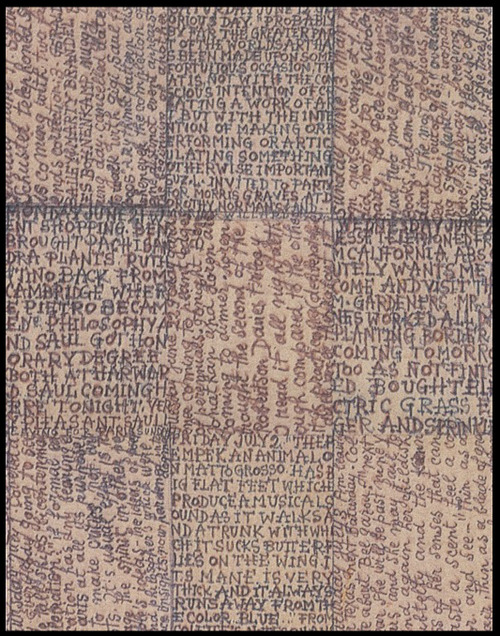
Here’s her unique way of keeping a diary:
I started doing one on my floor. I had a large canvas, and I divided it into days and months, and each day I put in one quote I was particularly fond of that I found in a book. And that was the diary. I did it for a year and a half, and then twice for two and a half months. The one for a year and a half is an enormous affair. I rolled it up because I can’t clean it without erasing everything. So now I don’t put it on the floor anymore. It was very good looking.
She was a truly fascinating artist. I encourage you to learn more about her work from these links:
I think it’s very important for people to run away from home… Most artists are runaways. From whatever they had. From their own coordinates, from the main street, from the family, from the culture, from the society that produced them… The moment I have to learn something new, like new habits, new languages, new coordinates, I myself have something like a rebirth. I reduce myself to the lowest common denominator. And this is very healthy for an artist. To start all over again. One gets in touch with the original poetry of his tender times, his beginnings. One becomes again a peasant, a desperado. This is very healthy.
I love everything about this clip of Saul Steinberg drawing — the brief glimpse of his studio, how he holds his pen, the ashtray next to the bottle of ink…
Saul Steinberg drawing
The master. This is just a clip from a longer, 26-minute video of Steinberg talking about his work:
Here Steinberg talks about his morning routine:
In the morning I get up and I work. It’s a necessity to work a few hours. Drawing is my way of explaining to myself what goes on in my mind. I start with the idea of a drawing, I have the appetite to make a drawing, I have everything looking at me—paper, ink, pencil—I start sometimes making a hand holding a pen and making a drawing. This gives me time to think of what drawing this pen is going to do.
I also want in these moments to lose the responsibility of the drawing It’s not I who makes this drawing it’s the hand I that I drew that makes it. This way I have a certain freedom, a certain lack of responsibility — I can always blame it on the hand that I drew.
Although, the video reminds me:
An artist describing *how* they work is almost always fascinating.
An artist *explaining* their work is almost always painful.
Filed under: Saul Steinberg
A cartoon by Saul Steinberg. View more cartoons from 1955 to 1965.
Man, he was good.
Filed under: Steinberg
Saul Steinberg’s fake documents and diplomas
Steinberg, probably due to the bureaucracy he faced immigrating to the United States, at one point got really into drawing fake documents.
One story goes that when Charles Eames was asked for his credentials qualifying him for a teaching job, he had Steinberg draw the diploma, which is, of course, gibberish. (That’s Eames, top left, admiring his diploma.)
Steinberg also drew Cartier-Bresson a fake diploma, giving him “permission” to be a photographer.
I got to see one of these in person at the Sackner Archive and it was wonderful.
See also: my MFA on DVD